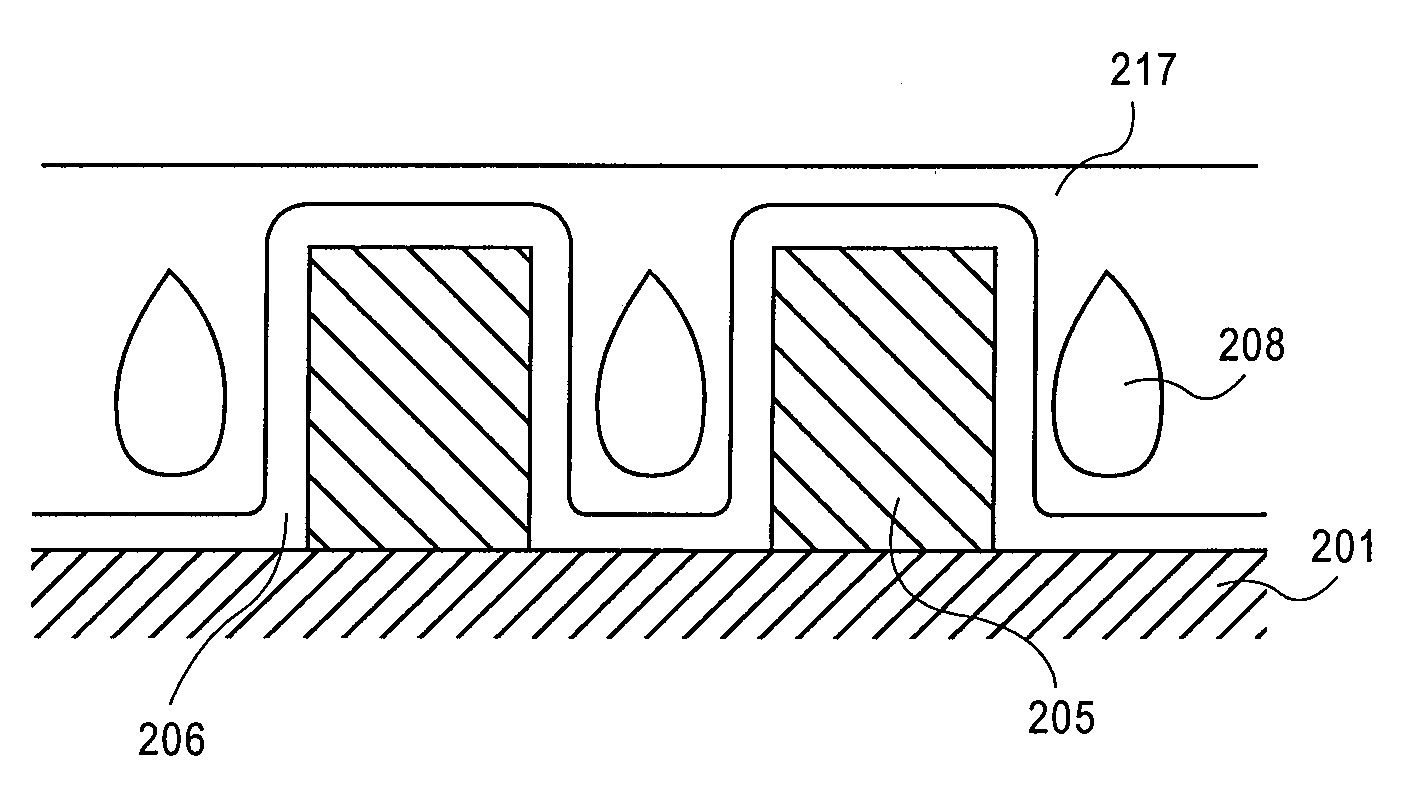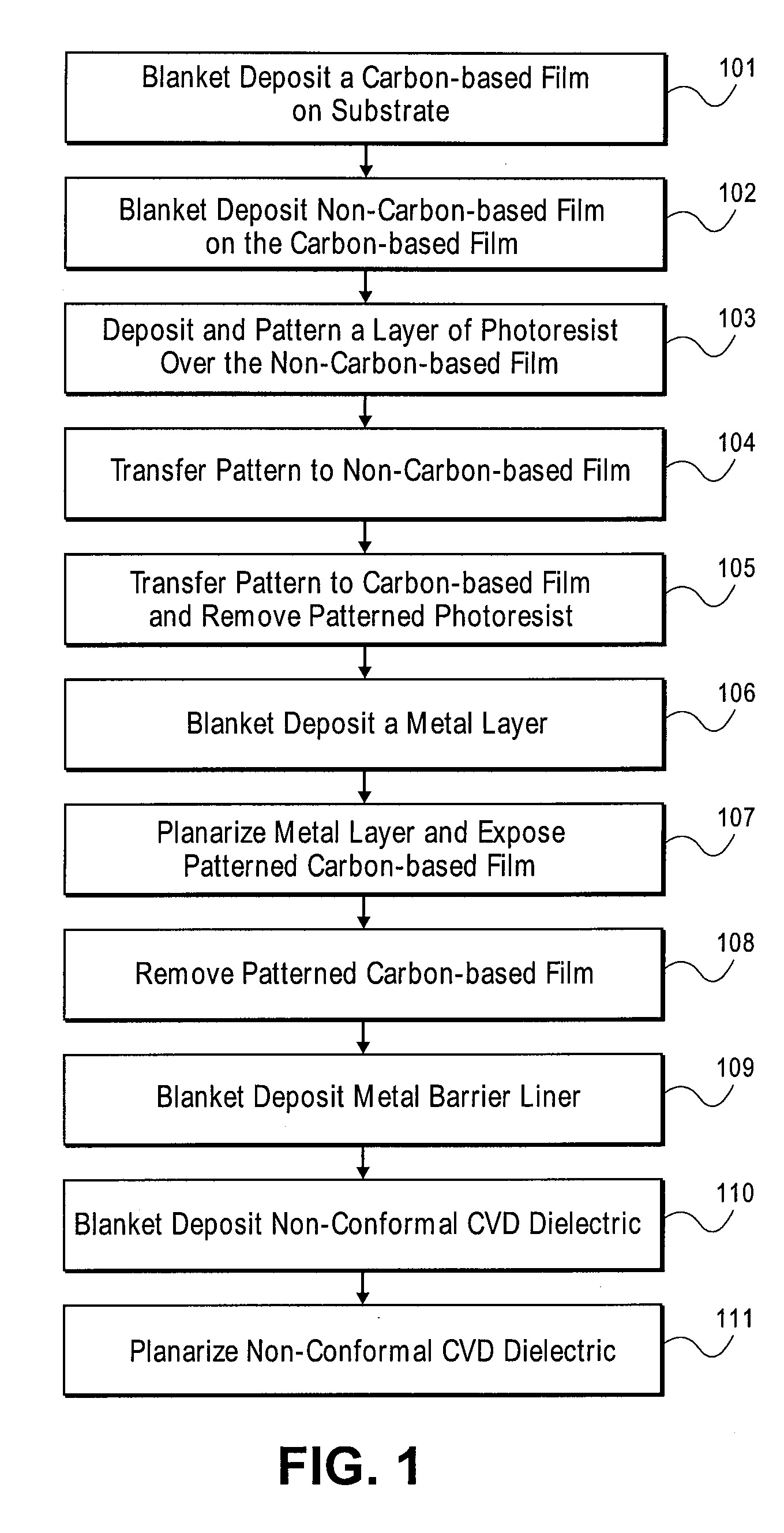Air gap interconnects using carbon-based films
a carbon-based film and air gap technology, applied in the direction of basic electric elements, electrical equipment, semiconductor/solid-state device manufacturing, etc., can solve the problems of increased intra-line capacitance and cross-talk between closely spaced interconnect lines, affecting the effect, and difficult removal of sacrificial imds, etc., and achieve good electrical isolation properties
- Summary
- Abstract
- Description
- Claims
- Application Information
AI Technical Summary
Benefits of technology
Problems solved by technology
Method used
Image
Examples
Embodiment Construction
[0032]In the following description, various aspects of the present invention will be described, and various details set forth in order to provide a thorough understanding of the present invention. However, it would be apparent to those skilled in the art that the present invention may be practiced with only some or all of the aspects of the present invention, and the present invention may be practiced without the specific details. In other instances, well-known features are admitted or simplified in order not to obscure the present invention.
[0033]It should be understood that FIGS. 1A through 14F are merely illustrative and may not be drawn to scale. While certain exemplary embodiments have been described and shown in the accompanying drawings, it is to be understood that such embodiments are merely illustrative and not restrictive of the current invention, and that this invention is not restricted to the specific constructions and arrangements shown and described since modification...
PUM
 Login to View More
Login to View More Abstract
Description
Claims
Application Information
 Login to View More
Login to View More - R&D
- Intellectual Property
- Life Sciences
- Materials
- Tech Scout
- Unparalleled Data Quality
- Higher Quality Content
- 60% Fewer Hallucinations
Browse by: Latest US Patents, China's latest patents, Technical Efficacy Thesaurus, Application Domain, Technology Topic, Popular Technical Reports.
© 2025 PatSnap. All rights reserved.Legal|Privacy policy|Modern Slavery Act Transparency Statement|Sitemap|About US| Contact US: help@patsnap.com



